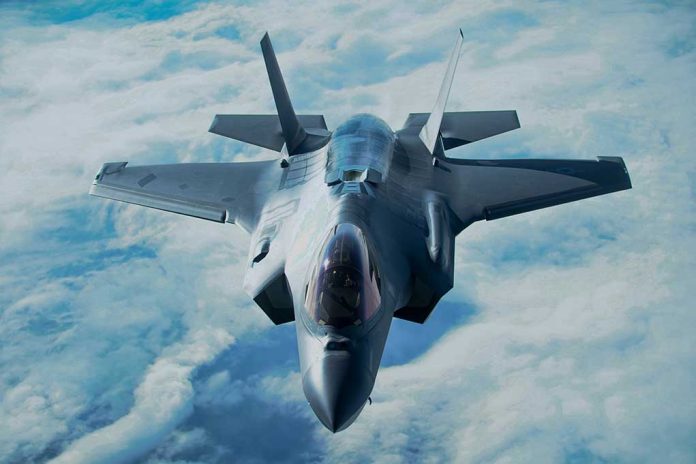
The resumption of F-35 jet deliveries to Indo-Pacific countries marks a significant upgrade in regional defense capabilities, but questions remain about the long-term impact on stability.
At a Glance
- F-35 jet deliveries to Indo-Pacific countries resume, boosting regional defense capabilities
- Enhanced air combat capabilities aim to deter potential threats and maintain power balance
- Concerns persist about the impact on regional stability and potential escalation of tensions
- U.S. reaffirms commitment to Indo-Pacific allies through advanced military technology
F-35 Deliveries Bolster Indo-Pacific Defense
The resumption of F-35 jet deliveries to countries in the Indo-Pacific region marks a significant milestone in efforts to enhance regional security. As tensions continue to simmer in this strategically vital area, the introduction of these advanced fighter jets represents a substantial upgrade to the defense capabilities of U.S. allies. The F-35, with its cutting-edge stealth technology and superior combat systems, is poised to play a crucial role in maintaining the balance of power in a region increasingly characterized by geopolitical competition.
The decision to proceed with these deliveries underscores the United States’ commitment to its partners in the Indo-Pacific. By providing allies with state-of-the-art military hardware, the U.S. aims to strengthen its strategic position and reassure regional partners of its long-term engagement. However, this move also raises questions about the potential for escalating tensions and the risk of triggering an arms race in an already volatile region.
🇺🇸–🇰🇷@PACAF F-35A Lightning II aircraft launch to train alongside #ROKAirForce, reinforcing interoperability and combined capabilities of our ironclad #Alliance to deter threats to regional stability in the #FreeAndOpenIndoPacific.
📍: #SouthKorea
📸: MSgt Eric Burks pic.twitter.com/MwTzE6PQ5v
— U.S. Indo-Pacific Command (@INDOPACOM) February 26, 2024
Strategic Implications and Regional Stability
The introduction of F-35 jets into the Indo-Pacific theater has far-reaching implications for regional security dynamics. These advanced aircraft provide their operators with a significant technological edge, potentially altering the military balance in the region. Proponents argue that this enhanced deterrence capability will contribute to stability by discouraging potential aggressors. Critics, however, warn that it could lead to increased militarization and heighten existing tensions.
While the focus is on the F-35, it’s worth noting that other aircraft, such as the F-16 Fighting Falcon, continue to play vital roles in regional defense strategies. The F-16’s versatility and proven track record make it a complementary asset to the more advanced F-35. As stated by the U.S. Air Force, “The F-16 Fighting Falcon is a compact, multi-role fighter aircraft. It is highly maneuverable and has proven itself in air-to-air combat and air-to-surface attack.”
Challenges and Considerations
Despite the clear advantages offered by the F-35, its integration into Indo-Pacific defense frameworks is not without challenges. Maintenance requirements, operational costs, and the need for specialized training all present significant hurdles for recipient countries. Additionally, the complex geopolitical landscape of the Indo-Pacific region demands careful consideration of how these advanced weapons systems might affect diplomatic relations and conflict resolution efforts.
The ongoing conflict in Ukraine and recent events in Israel highlight the critical importance of advanced air defense systems and the role they play in modern warfare. As Indo-Pacific nations integrate F-35 jets into their arsenals, they must also consider the broader implications for regional security architecture and crisis management protocols. Balancing deterrence with diplomacy will be crucial in ensuring that these advanced capabilities contribute to stability rather than escalation.
















